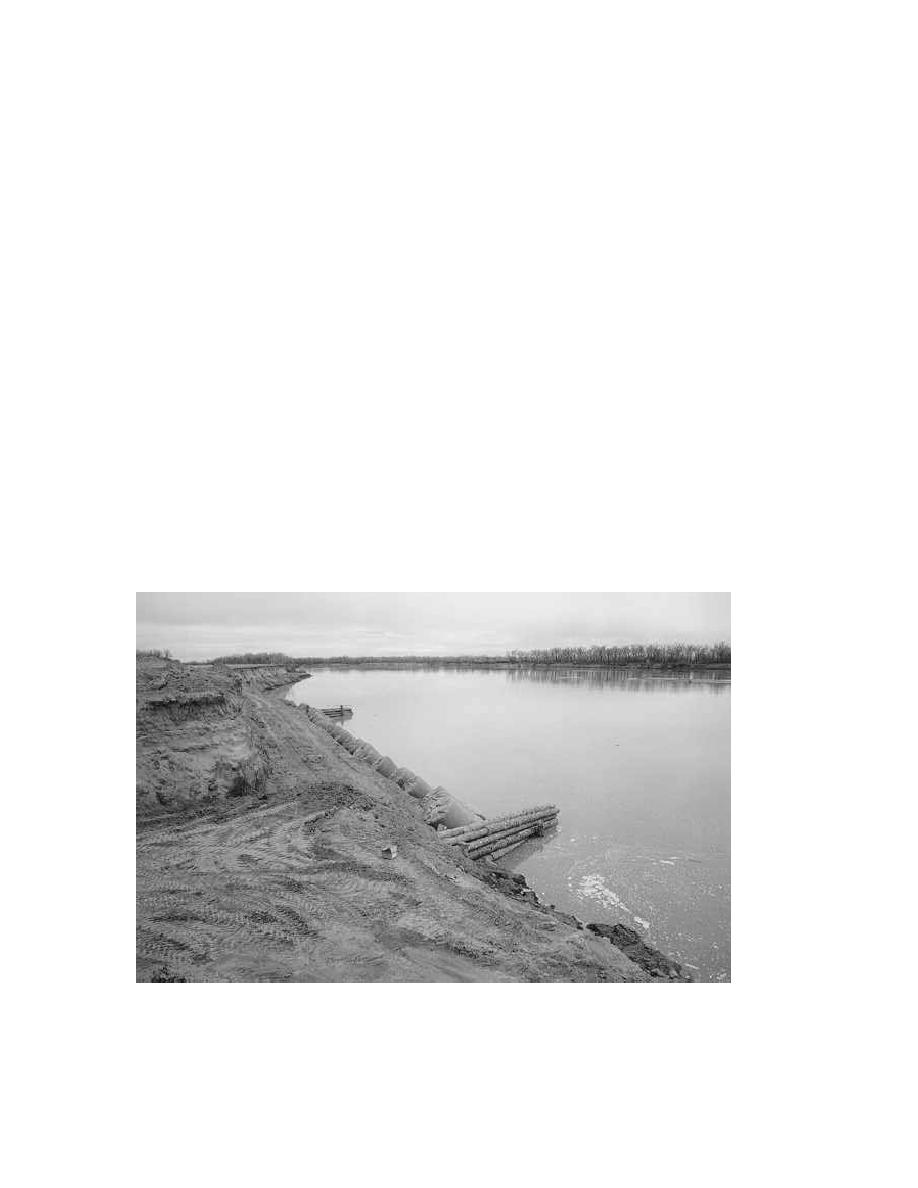
|
|

|
||
 Appendix B: Bioengineering for Streambank Erosion Control -- Guidelines
revetments, tree butts, and deflection dikes were used to protect toes from being undercut or
flanks at the upper and lower ends from being washed out. In these cases, water currents are
prevented from undercutting the bank either through direct protection of the lower bank with
some hard structure or material or through some kind of deflection structure that deflects the
currents off of the bank. Deflection structures may be some kind of spur dike, vane,
transverse dike, or bendway weir. Figure 3 shows two timber cribs serving as deflection
structures on the upper Missouri River to direct current away from the bank. In the case of
hard toes on the lower bank, plants and engineered materials to hold them in place are
positioned above the hard toe. Rock riprap keyed into the bank at both the upper and lower
ends of a bioengineering treatment are called refusals (Figure 4) and prevent currents getting
behind the structure, called flanking. In the case of a deflection structure, these are usually
placed in a series at critical points of scour and plants with engineered materials are placed
in between them to help hold the bank. With the aid of these structures and time, the planted
vegetation establishes roots and stems in the bank to hold it together and trap sediment. This
sedimentation, in turn, leads to spread of the planted species and colonization by other
opportunistic plants.
Figure 3. Timber cribs serving as deflection structures on the upper
Missouri River to direct current away from the bank where there
are bioengineering treatments.
B-16
|
||
 |
||